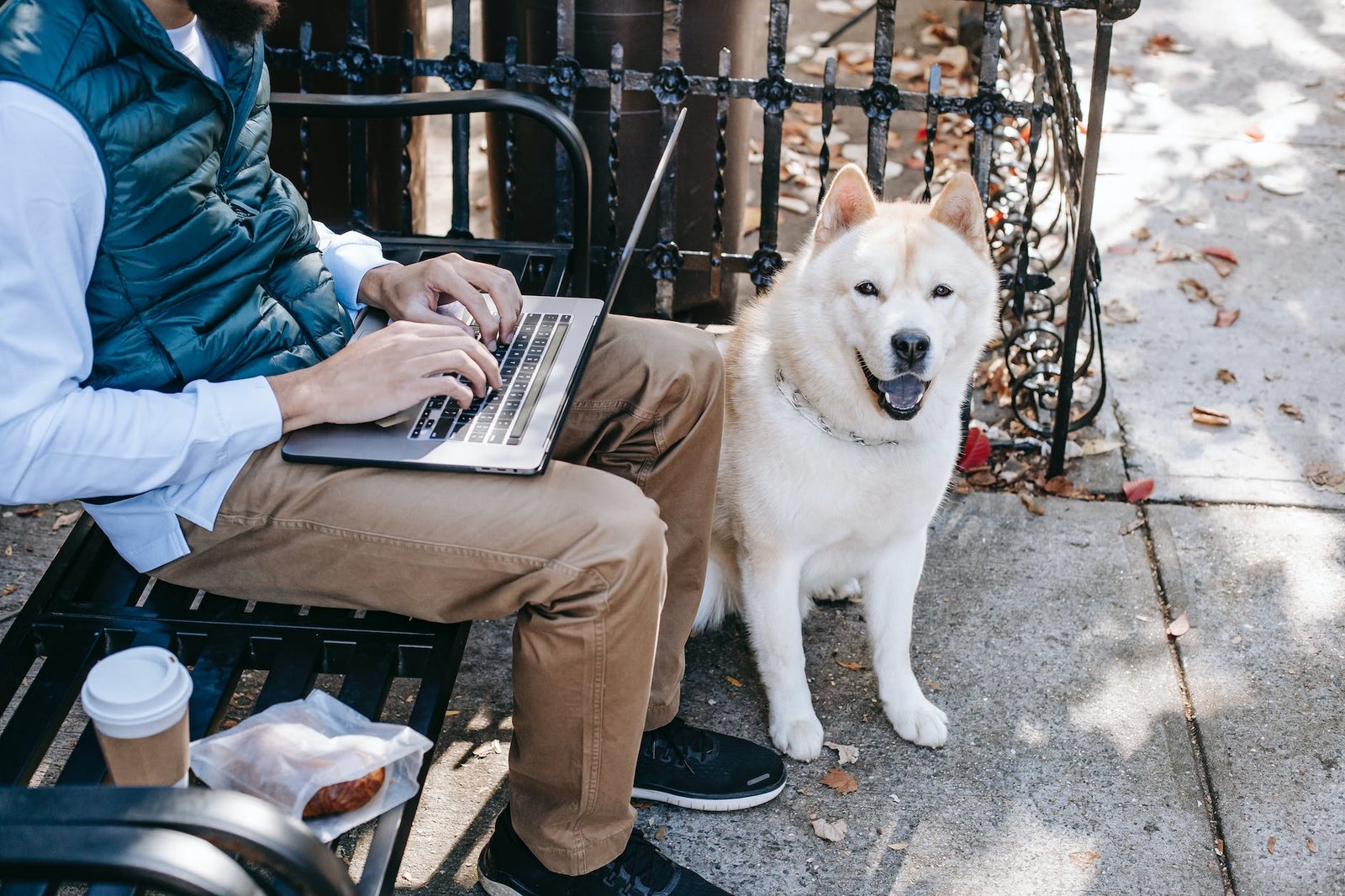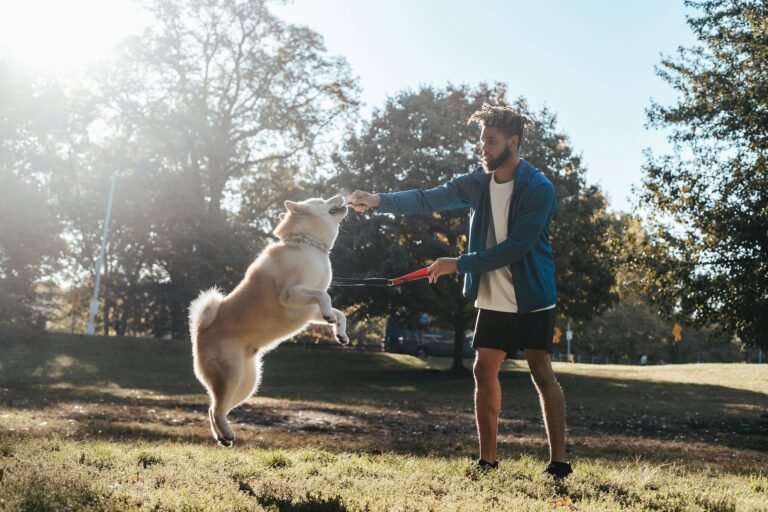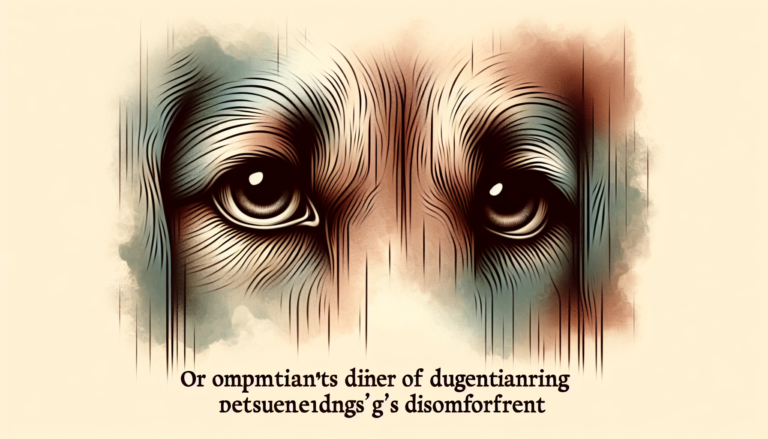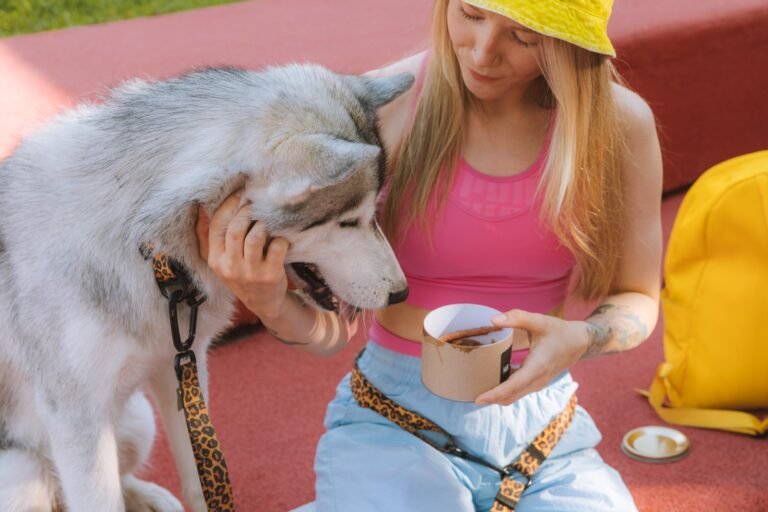Trimming the Pounds: Effective Dog Weight Management Tips
Understanding Dog Weight Management
Maintaining a healthy weight is essential for your dog’s overall well-being and quality of life. Just like humans, dogs can be prone to weight gain, which can lead to various health issues. In this section, we will explore the importance of maintaining a healthy weight for your furry friend and discuss the signs of overweight or obesity in dogs.
The Importance of Maintaining a Healthy Weight
Keeping your dog at a healthy weight is crucial for their physical and emotional health. When dogs are overweight or obese, they are at a higher risk of developing a range of health problems, including:
-
Joint and mobility issues: Excess weight puts additional strain on your dog’s joints, leading to discomfort and an increased risk of conditions such as arthritis.
-
Heart disease: Overweight dogs are more likely to develop heart problems, such as high blood pressure and heart failure.
-
Diabetes: Obesity is a significant risk factor for diabetes in dogs, which can lead to various complications and a reduced quality of life.
-
Decreased lifespan: Studies have shown that overweight dogs tend to have shorter lifespans compared to dogs at a healthy weight.
By maintaining a healthy weight for your dog, you can help prevent these health issues and ensure they lead a long, happy, and active life. Regular exercise, a balanced diet, and portion control are key factors in achieving and maintaining a healthy weight. Consult with your veterinarian to determine the ideal weight range for your dog’s breed and size.
Signs of Overweight or Obesity in Dogs
Identifying whether your dog is overweight or obese is important for effective weight management. Here are some common signs to look out for:
| Sign of Overweight or Obesity |
|---|
| Visible ribs are not easily felt |
| Loss of a noticeable waist |
| Difficulty feeling the ribs |
| Excessive fat deposits, especially around the abdomen |
| Lethargy and decreased energy levels |
| Difficulty breathing |
| Joint problems |
| Reluctance to exercise |
If you notice any of these signs in your dog, it is essential to consult with your veterinarian. They can assess your dog’s weight and overall health, provide guidance on weight management strategies, and recommend a suitable diet and exercise plan. Regular veterinary check-ups and discussions about your dog’s weight can help you stay on track and make any necessary adjustments to ensure their optimal health.
Understanding the importance of maintaining a healthy weight for your dog and recognizing the signs of overweight or obesity are the first steps in effective dog weight management. In the next sections, we will explore various factors contributing to weight gain in dogs and provide tips for a successful weight management journey. For more information on keeping your dog healthy, check out our articles on dog health tips and dog nutrition guidelines.
Factors Contributing to Weight Gain
Maintaining a healthy weight for your dog is crucial to their overall wellbeing. Understanding the factors that contribute to weight gain is essential in effectively managing your dog’s weight. Here are three key factors to consider:
Overfeeding and Incorrect Portion Sizes
Overfeeding and incorrect portion sizes are common culprits of weight gain in dogs. It’s important to remember that each dog has unique nutritional requirements based on factors such as age, breed, size, and activity level. Feeding your dog too much, or providing larger portion sizes than necessary, can lead to excess calorie intake and weight gain.
To ensure you’re feeding your dog the right amount, consult with your veterinarian or refer to reputable sources that provide dog nutrition guidelines, such as our article on dog nutrition guidelines. It’s also worth considering a measuring cup or scale to accurately measure your dog’s food and avoid overfeeding.
Lack of Exercise and Physical Activity
Just like humans, dogs need regular exercise to maintain a healthy weight. A sedentary lifestyle and lack of physical activity can contribute to weight gain and obesity in dogs. Insufficient exercise can result in fewer calories burned, leading to an imbalance between calorie intake and expenditure.
To keep your dog active, engage in regular exercise routines such as brisk walks, play sessions, or interactive games. The amount and intensity of exercise should be tailored to your dog’s age, breed, and overall health. Consulting with your veterinarian can help determine the appropriate exercise regimen for your furry friend.
Medical Conditions and Genetic Predisposition
Certain medical conditions and genetic predispositions can make dogs more prone to weight gain. Hormonal imbalances, such as hypothyroidism, can slow down metabolism and contribute to weight gain. Additionally, some dog breeds are more predisposed to obesity than others.
Regular veterinary check-ups are essential in identifying and managing any underlying medical conditions that may contribute to weight gain. Your veterinarian can provide guidance on managing weight in dogs with specific health conditions, as well as recommend appropriate dietary adjustments or treatment options.
By being aware of these factors and taking appropriate measures, you can help prevent weight gain and ensure your dog maintains a healthy weight. Remember, it’s always beneficial to consult with a veterinarian for personalized advice based on your dog’s individual needs. For more tips on keeping your dog healthy, check out our article on dog health tips.
Effective Dog Weight Management Tips
Maintaining a healthy weight for your dog is vital for their overall wellbeing. Here are some effective tips to help manage your dog’s weight:
Consult with a Veterinarian
Before starting any weight management program for your dog, it’s essential to consult with a veterinarian. They can assess your dog’s current weight, body condition, and provide personalized guidance. A veterinarian can also rule out any underlying medical conditions that may contribute to weight gain. They may recommend specific dietary adjustments or exercise routines tailored to your dog’s needs.
Establish a Balanced Diet
A balanced diet is crucial for maintaining your dog’s weight. Choose high-quality dog food that is appropriate for their age, size, and activity level. Look for dog food formulas that provide the necessary nutrients without excessive calories. Avoid feeding your dog table scraps or excessive treats, as these can contribute to weight gain. For more information on dog nutrition, check out our article on dog nutrition guidelines.
Portion Control and Feeding Schedule
Proper portion control is essential for managing your dog’s weight. Follow the feeding guidelines provided by the dog food manufacturer, adjusting the portion size based on your dog’s age, weight, and activity level. Consider using a measuring cup to ensure accuracy. Dividing your dog’s daily food allowance into multiple small meals can help prevent overeating and maintain their metabolism. Stick to a consistent feeding schedule to establish a routine.
| Dog Weight | Daily Food Allowance |
|---|---|
| 10 lbs | 1/2 – 1 cup |
| 20 lbs | 1 – 1 1/2 cups |
| 30 lbs | 1 1/2 – 2 cups |
| 40 lbs | 2 – 2 1/2 cups |
Regular Exercise and Physical Activity
Exercise plays a crucial role in weight management for dogs. Engaging your dog in regular physical activity helps burn calories, build muscle, and maintain a healthy weight. Take your dog for daily walks, play fetch in the park, or engage in interactive games to keep them active. The duration and intensity of exercise should be appropriate for your dog’s age, breed, and fitness level. Regular exercise not only aids in weight management but also promotes mental stimulation and strengthens the bond between you and your furry friend.
Monitor and Adjust as Needed
Regular monitoring of your dog’s weight is essential to track progress and make adjustments as needed. Weigh your dog regularly using a pet scale or visit your veterinarian for weigh-ins. Additionally, keep an eye on their body condition score, which assesses their overall body fat percentage. If your dog’s weight is not progressing as desired or if you notice any significant changes in their health, consult with your veterinarian for further guidance.
By following these effective dog weight management tips, you can help your furry companion achieve and maintain a healthy weight. Remember, a healthy weight contributes to their overall wellbeing and enhances their quality of life. For more dog health tips and resources, visit our website keepdogclose.com.
Healthy Treat Alternatives
When it comes to rewarding your furry friend, treats play a significant role in training and bonding. However, not all treats are created equal, and it’s important to choose healthy options for your dog. In this section, we will explore two alternatives for healthy dog treats: homemade treat recipes and store-bought healthy treat options.
Homemade Treat Recipes
Creating homemade treats for your dog allows you to have control over the ingredients and ensure that they are wholesome and nutritious. Here are a few homemade treat recipes that you can try:
| Recipe | Ingredients | Instructions |
|---|---|---|
| Peanut Butter Banana Bites | – 1 ripe banana – 1/4 cup peanut butter – 1 cup oats – 1/4 cup coconut flour |
1. Preheat the oven to 350°F (175°C). 2. Mash the ripe banana and combine it with peanut butter. 3. Add oats and coconut flour to the mixture and mix well. 4. Roll the dough into small balls and place them on a baking sheet. 5. Flatten each ball with a fork. 6. Bake for 15-20 minutes or until golden brown. 7. Allow the treats to cool completely before serving. |
| Sweet Potato Chews | – 2 large sweet potatoes – 1 tablespoon coconut oil – Pinch of cinnamon (optional) |
1. Preheat the oven to 250°F (120°C). 2. Wash and peel the sweet potatoes. 3. Cut them into thin slices or long strips. 4. Toss the sweet potato slices with coconut oil and cinnamon (optional). 5. Place the slices on a baking sheet in a single layer. 6. Bake for 2-3 hours until the slices are dehydrated and crispy. 7. Allow the chews to cool completely before serving. |
These homemade treats are not only delicious but also provide nutritional value to your dog. Remember to introduce new ingredients gradually and monitor your dog for any signs of allergies or sensitivities.
Store-Bought Healthy Treat Options
If you don’t have the time or resources to make homemade treats, there are plenty of healthy options available in stores. When choosing store-bought treats, look for options that are made with high-quality ingredients and free from artificial additives or fillers. Here are some examples of healthy treat options:
| Treat | Key Features |
|---|---|
| Freeze-Dried Meat Treats | – Single ingredient (meat) – No preservatives or additives – High in protein |
| Dental Chews | – Promote dental health – Made with natural ingredients – Help reduce plaque and tartar |
| Vegetable-Based Treats | – Made with real fruits and vegetables – No artificial colors or flavors – Rich in vitamins and minerals |
By opting for store-bought treats that prioritize your dog’s health, you can ensure that your furry friend receives a tasty reward while maintaining a balanced diet. Remember to check the feeding guidelines and adjust the treat portion sizes accordingly to prevent overfeeding. For more information on dog nutrition guidelines, visit our article on dog nutrition guidelines.
As with any dietary changes, it’s essential to consult with your veterinarian before introducing new treats or making modifications to your dog’s diet. They can provide personalized recommendations based on your dog’s specific needs and help you make informed decisions.
Rewarding your dog with healthy treats not only supports their weight management goals but also contributes to their overall well-being. Experiment with different treat options and find what works best for your dog’s preferences and dietary requirements.
Tracking Progress and Celebrating Success
Ensuring your dog’s weight management efforts are effective requires regular monitoring and recognition of achievements. By tracking progress and celebrating successes, you can stay motivated and make necessary adjustments to maintain your dog’s healthy weight. Here are some key strategies to help you stay on track.
Regular Weigh-Ins
Regular weigh-ins are an essential part of tracking your dog’s weight management progress. Weigh your dog at home or visit your veterinarian for accurate measurements. Record the weight in a journal or use a spreadsheet to monitor changes over time. Regular weigh-ins provide valuable information to assess the effectiveness of your weight management plan and make any necessary adjustments.
| Date | Weight (lbs) |
|---|---|
| January 1, 2022 | 55 |
| February 1, 2022 | 52 |
| March 1, 2022 | 50 |
| April 1, 2022 | 48 |
Measuring Body Condition Score
In addition to weighing your dog regularly, assessing their body condition score (BCS) can provide further insights into their overall health and weight management progress. The BCS is a visual and tactile evaluation of your dog’s body fat and muscle mass. It allows you to determine if your dog is at an ideal weight, overweight, or underweight.
Use a body condition scoring chart, which typically ranges from 1 to 9, to assess your dog’s BCS. A score of 4 or 5 is usually considered ideal, with the ribs easily felt but not visible, and a visible waistline when viewed from above.
Regularly evaluating your dog’s body condition score can help you identify any changes and adjust their diet and exercise regimen accordingly.
Recognizing Achievements
Celebrating your dog’s weight management achievements is vital for maintaining motivation and reinforcing positive behavior. When your dog reaches a milestone, such as losing a certain amount of weight or improving their body condition score, acknowledge their progress and give them praise.
You can also reward your dog with non-food incentives, such as extra playtime, a new toy, or a special outing. These rewards provide positive reinforcement and encourage your dog to continue their weight management journey.
Remember, each dog is unique, and weight management may take time. Stay patient, consistent, and celebrate every small success along the way. For more comprehensive tips on keeping your dog healthy, check out our article on dog health tips.
By regularly tracking your dog’s weight, assessing their body condition score, and celebrating their achievements, you can effectively manage their weight and ensure their overall well-being. Stay committed to your weight management plan and consult with your veterinarian for guidance and support. With your dedication and love, your dog can achieve and maintain a healthy weight for a happy and fulfilling life.
Effective Dog Weight Management Tips
Maintaining a healthy weight is essential for your dog’s overall wellbeing and longevity. By implementing effective weight management strategies, you can help your furry friend lead a healthier and happier life. Here are some essential tips to consider:
Consult with a Veterinarian
Before embarking on any weight management program for your dog, it is crucial to consult with a veterinarian. A veterinarian can assess your dog’s current weight, body condition, and overall health. They can provide personalized recommendations and guidance based on your dog’s specific needs and any underlying medical conditions. Regular check-ups with your veterinarian will also help monitor your dog’s progress throughout the weight management journey.
Establish a Balanced Diet
A balanced diet plays a significant role in maintaining your dog’s weight. Opt for high-quality dog food that is appropriate for your dog’s age, size, and breed. Avoid free-feeding and establish a feeding schedule based on your veterinarian’s recommendations. Measure the appropriate portion sizes to prevent overfeeding, and avoid feeding table scraps or excessive treats, as these can contribute to weight gain.
For more information on dog nutrition and guidelines, check out our article on dog nutrition guidelines.
Portion Control and Feeding Schedule
Portion control is essential to ensure your dog receives the right amount of food without overeating. Follow the feeding guidelines provided by the dog food manufacturer and adjust portion sizes based on your dog’s weight management goals. Split your dog’s daily food allowance into multiple small meals throughout the day to prevent overeating and promote better digestion.
Regular Exercise and Physical Activity
Regular exercise is key to managing your dog’s weight. Engage in daily physical activities such as walks, runs, or play sessions to help burn calories and maintain muscle tone. The amount and intensity of exercise will depend on your dog’s age, breed, and overall health. Consult with your veterinarian to determine an exercise routine that suits your dog’s needs and gradually increase the duration and intensity as your dog’s fitness level improves.
Monitor and Adjust as Needed
Regularly monitor your dog’s weight and body condition to ensure that your weight management efforts are effective. Use a scale to measure your dog’s weight at home or make regular visits to the veterinarian for weigh-ins. Additionally, learn to measure your dog’s body condition score, which assesses the amount of body fat and muscle mass. Adjust your dog’s diet and exercise regimen as needed based on these assessments.
For more tips on maintaining your dog’s overall health, check out our articles on dog health tips and signs of a healthy dog.
By implementing these effective dog weight management tips, you can help your furry companion achieve and maintain a healthy weight. Remember to seek guidance from your veterinarian, establish a balanced diet, control portion sizes, encourage regular exercise, and monitor your dog’s progress. With your commitment and care, your dog will enjoy a healthier, more active lifestyle.







